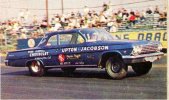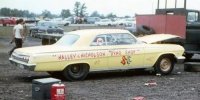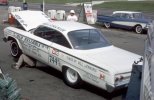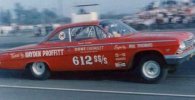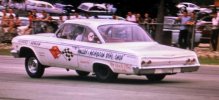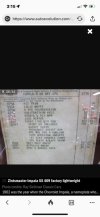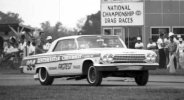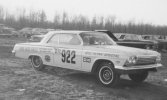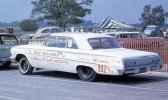George good recap.Living in SoCal, I attended every NHRA Winternational event from 1961 through 1965, as they were all held at Pomona. I remember very well the 1963 event. I also attened the NHRA meeting with all the S/S racers, the meeting that caused all the comotion, with racers yelling at NHRA and vice versa. Having a 409/409 myself (1962), I hung out with a lot of the Chevy racers, Nicholson, Leal, Terry Prince, etc. All these guys had the new Z-11 Impalas. And all these cars went through the usual tech procedure, and all of them had been NHRA approved and classified as being S/S legal. That started the big broughhaha. There were 40 or 50 409/409 Super Stockers there, none of which were were Z-11 "light weights", but they were also approved and classified by NHRA as S/S legal. Naturally, the non Z-11 racers did NOT want to be paired up with a light weight Impala, with 427 cubic inches. A few of the non Z-11 Chevys were classified as S/S, and some as A/S. Although NHRA Tech Dept had been givien the spec sheet on the Z-11 in advance, I'm not sure they ever read it. I do know for sure that they had no idea that only about 50 cars were going to be built by Chevrolet, and even less when it came to the Pontiac Swiss Cheese 421's. It caused a ton of stress among the racers, NHRA, and a Chevy rep that was in attendance. When all this came to light at the meeting, NHRA called a halt and the meeting was put on pause for a short while, as NHRA tried to figure out what to do. Fortunately, there was the FX class for some to race in, and NHRA created on the fly, the LP class for the rest of the Z-11's, a seperate class for all the lightweight limited production cars to race in and still be in the Stock Class.
I must share that all of what you have shared worked for major events.
However, “the good ole boy” system was alive and well all over the country. Entirely possible to encounter guys that got into the “better lane”, flagmen that determined who was going to win, under weight cars being allowed to run, etc.etc.
I personally experienced the chaos about engine components determining a class when it was not done for others. I even got put in B/FX class one time with a 61-409 because the inspector has no idea what he was doing!
All car manufacturers were trying to win every week with reports being sent back to the factory office each Monday after big races. I have a couple of copies.
Anyway, both NHRA and AHRA did not keep up with the changes constantly coming out.
This led to the chaos you described above.


